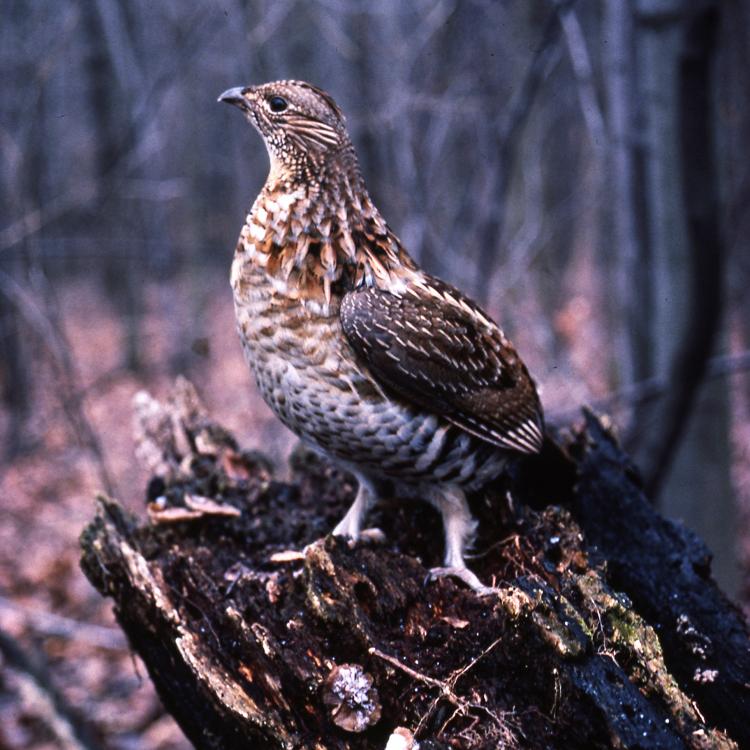Ruffed grouse
Terry O’Dell, Buckeye Rural Electric Cooperative
Q. Hi, Chip: I own two farms in southern Ohio near the Crown City mining property owned by the ODNR. One farm actually adjoins ODNR property. That said, I just read your story (Disappearing Act: Where Have All the Grouse Gone?) in the September 2021 issue of Ohio Cooperative Living. My brother and I were avid grouse hunters in the late 1960s and early 1970s. We raised Brittany bird dogs, and hunted every weekend during the grouse season. One of my farms was loaded with grouse. I am currently having timber cut from one of my farms and was wondering if the ODNR has any kind of repopulation programs for ruffed grouse? I sure miss hearing grouse drumming in the springtime.
A. Thanks for your question, Terry. If by “repopulation programs” you mean stocking pen-raised grouse or the trap-and-transfer of grouse in cooperation with wildlife agencies of other states, I didn’t think the ODNR was involved in anything like that currently. However, to make sure, I contacted Mark Wiley, the ruffed grouse biologist with the Ohio Division of Wildlife, and the following is what he had to say.
“Generally speaking, any form of re-stocking is not an option at this time. No Appalachian states appear willing to give up “extra” grouse currently, and commercial propagation and release simply does not work for ruffed grouse. Grouse are difficult to raise in captivity and, more importantly, captive birds rarely survive in the wild. Those that do survive a short time rarely reproduce. Basically, we have the grouse we have. Our only option is to improve their habitat [through timbering, as mentioned in my story] and promote their natural reproduction.”
Tim Hackworth, Buckeye Rural Electric Cooperative
Q. Hello Chip: I enjoy your wildlife columns in Ohio Cooperative Living. I read your column in the September 2021 issue regarding ruffed grouse. You seem to be saying that habitat is the major issue with the decline in grouse, but I will argue it is not; although I agree wildlife could benefit from more forest turnover.
Since 1986, I have lived in Gallia, then Meigs counties. I own a farm where we once had grouse, as well as bobwhite quail and wild turkeys. We still have a few quail and some turkeys, but no grouse. Over about a 10 to 15-year period (2005 to 2015), the grouse completely disappeared. The habitat is still here, and certainly didn’t change drastically in such a short period of time. Our quail have declined to almost nothing, and now we see fewer and fewer wild turkeys as well. To blame habitat alone is taking a simple approach to a very complex problem.
I believe many issues are in play: West Nile virus, decline in insect populations, increase in predators such as hawks, coyotes, bobcats, overuse of insecticides and herbicides, changing weather patterns, increase in ticks, turkeys eating grouse eggs/chicks, and certainly habitat to a certain degree. Choosing any certain cause is short-sighted, but I suspect West Nile may have had the biggest impact of all.
Hopefully, we will have more definitive answers to the grouse decline before they are all gone, although for all practical purposes, they already have disappeared. The fact that the ODNR still has a hunting season for grouse (and quail) is an outrage, in my opinion.
A. Hi, Tim: Thanks for your thoughts about my ruffed grouse story, and taking the time to write. I’ve had similar thoughts recently about wild bird populations in Ohio, especially turkeys. This past spring was the first time I had not hunted turkeys in nearly 40 years because the numbers are so low around the area of my home, about 20 miles south of Mansfield. The turkey population has been going down for some time, and I blamed it on cold, wet springs resulting in poor hatches, but I’m not so sure anymore. It seems there must be more to it than just weather, possibly disease, as you point out. Only time will tell…









